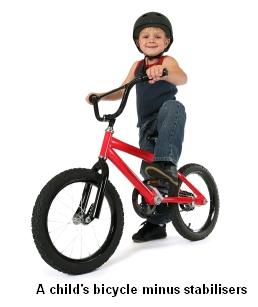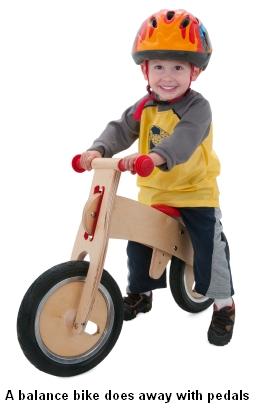 Riding a bicycle may be a skill often mastered by age six, but it has taken scientists three years to express the art of pedalling, steering and balancing a bike as a mathematical formula.
Riding a bicycle may be a skill often mastered by age six, but it has taken scientists three years to express the art of pedalling, steering and balancing a bike as a mathematical formula.
As every child quickly learns, the faster you pedal the easy it is to keep a bike upright, but on paper this skill translates to an equation of 31 numbers and symbols.
It is hoped that understanding the inertia, centrifugal and gyroscopic forces and the effects of gravity will help designers build better bicycles. Such calculations have already led to the development of cycling robots such as the one pictured below.
A spokesperson at the Environmental Transport Association (ETA) said: “There is complex science behind everything we do and cycling is no different – luckily we don’t have to read a complicated instruction manual to learn to ride.”
How best to learn to cycle?
 Cycling is a hugely valuable life skill that helps children with coordination, balance and motor skills and fosters a sense of independence from an early age, but how best to learn?
Cycling is a hugely valuable life skill that helps children with coordination, balance and motor skills and fosters a sense of independence from an early age, but how best to learn?
Traditional thinking has it that the child should spend a few months using a bike fitted with stabilisers before cycling unaided.
More recently, there has been a vogue for balance bikes – cycles with no pedals.
Build your own balance bike
The thinking behind pedal-less bicycles is that the child is able to master the skill of balancing the bike without the distraction of having to pedal.
A conventional bicycle can be adapted to be a blance bike by removing the pedals, crank and chain and lowering the height of the seat.
Yannick Read at the Environmental Transport Association (ETA) said: “There are advantages and disadvantages to both methods and every child is different. I tried my children on a good-quality balance bike, but they didn’t take to it and far preferred a traditional bicycle fitted with stabilisers.”
Tips on learning to cycle
|_. For children |_. For robots |
|* Make the bike is of the correct size and properly maintained
- When your child feels ready to have the stabilisers removed, find a gentle grassy slope with a large run-off area at the bottom.
- Give your child extra confidence by lowering the seat so that they can comfortably place both feet on the ground
- During the first couple of runs keep a hold of the seat.
- Once they feel confident return the seat to its correct height.
Cycle insurance – how does yours compare?
Cycle insurance from the ETA includes new-for-old, cover for accidental damage, £1m third party insurance, personal accident cover and if you breakdown, we will even come out and recover you and your bike. Get an instant online quote below.

0 Comments View now